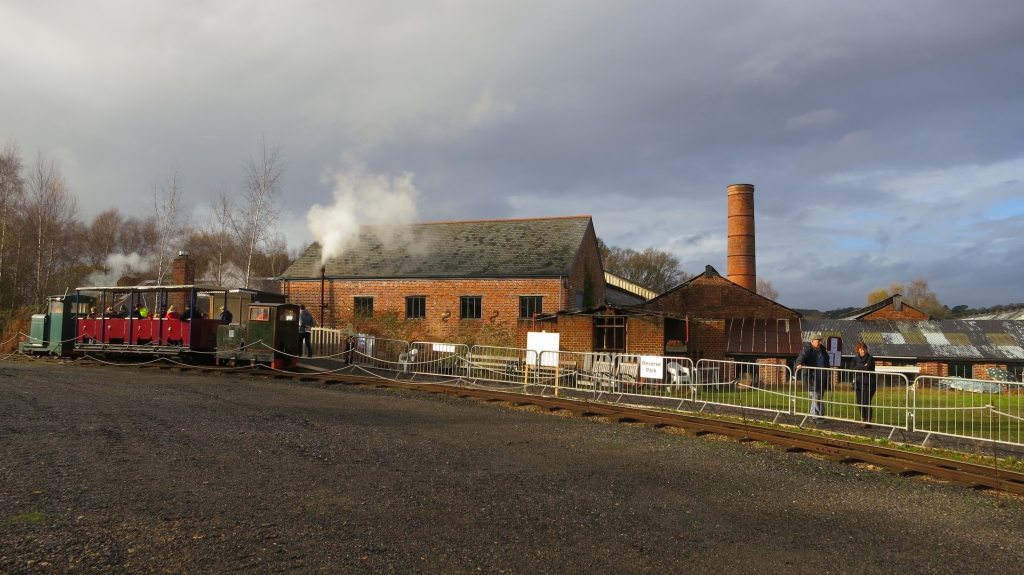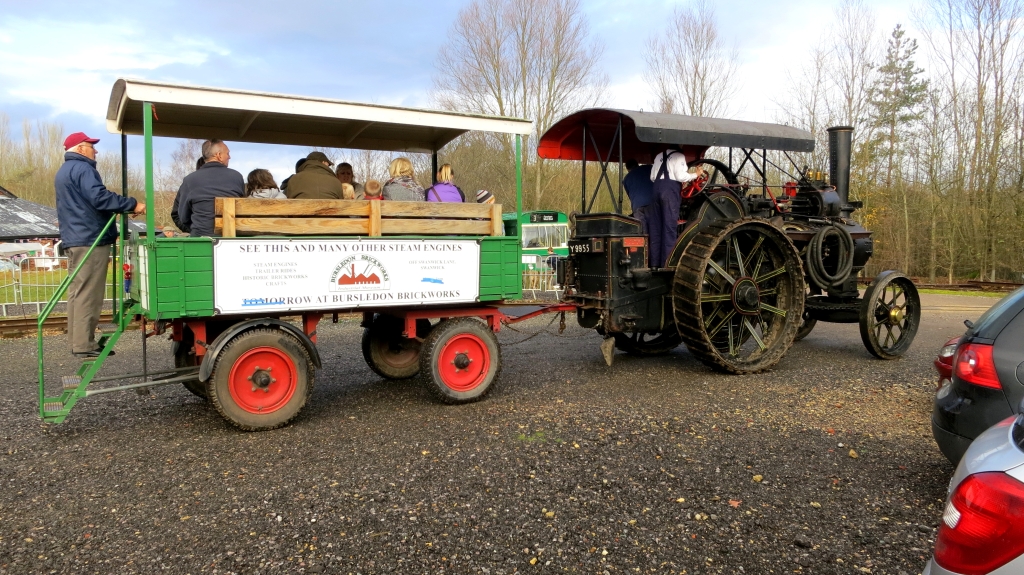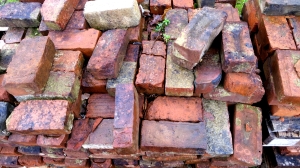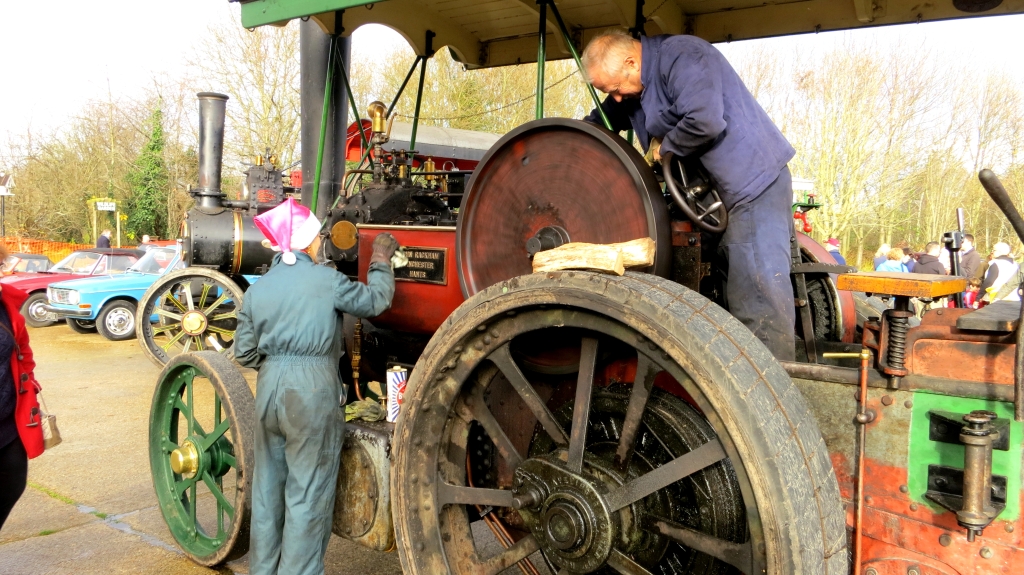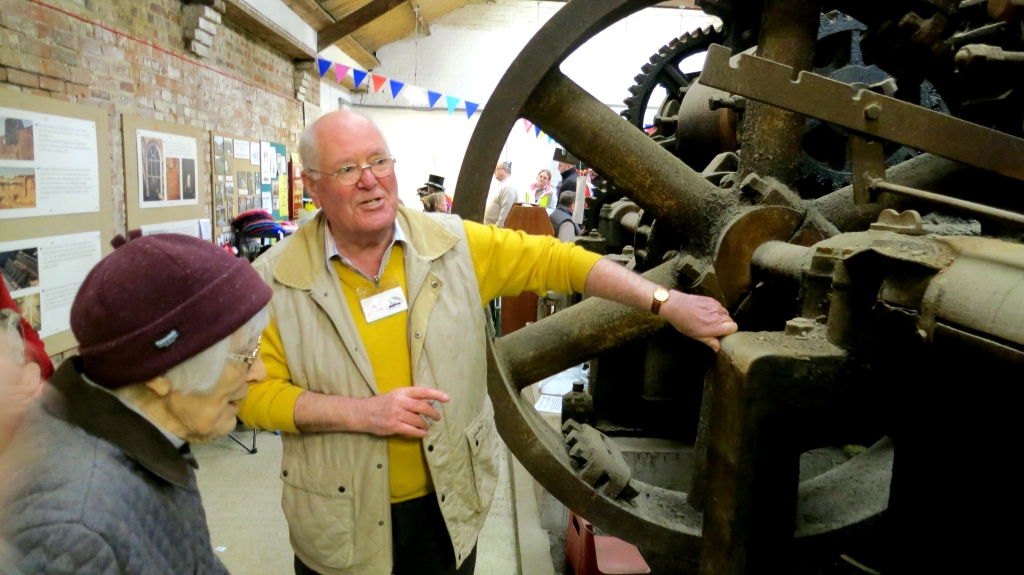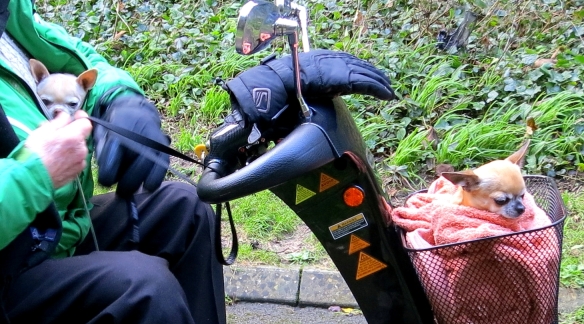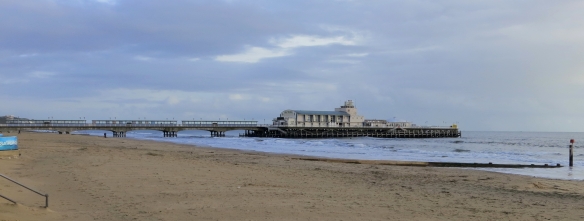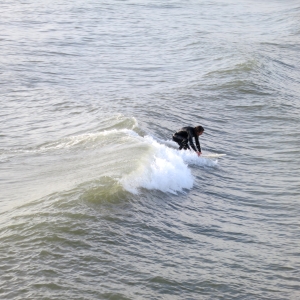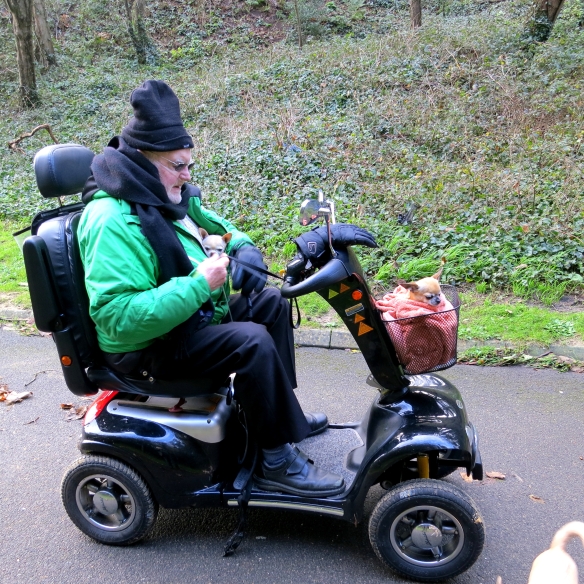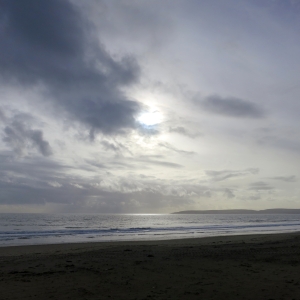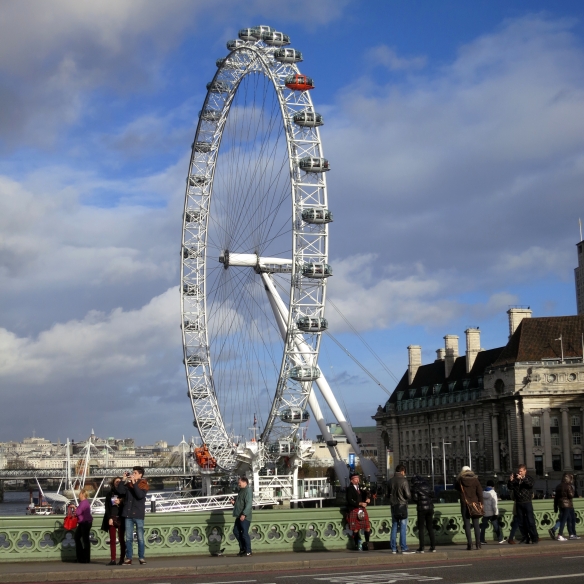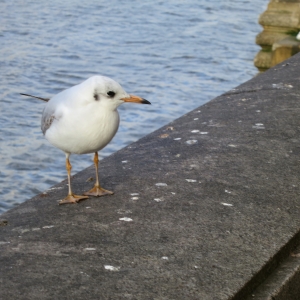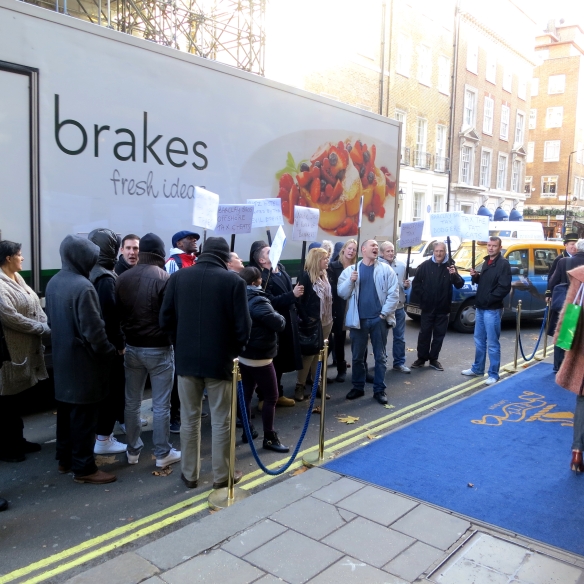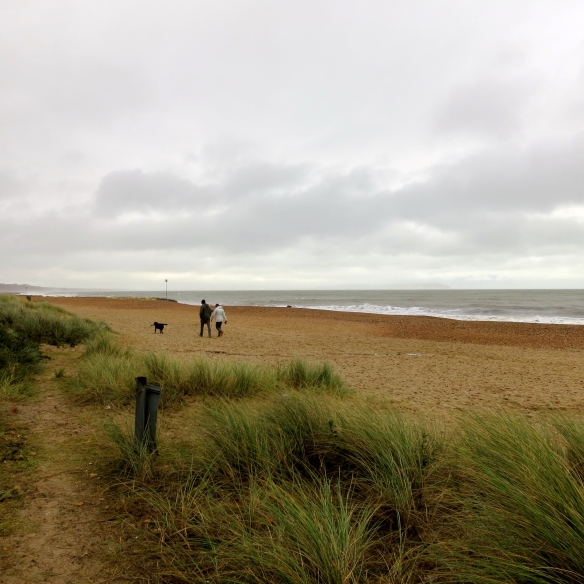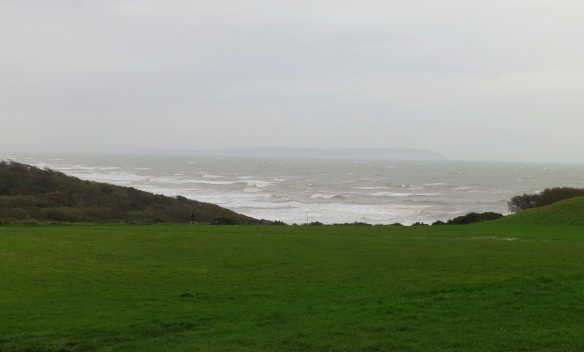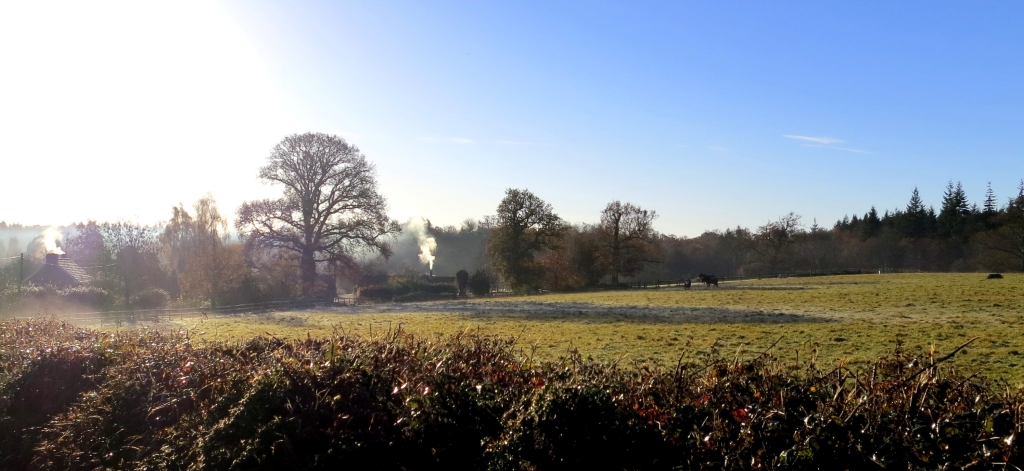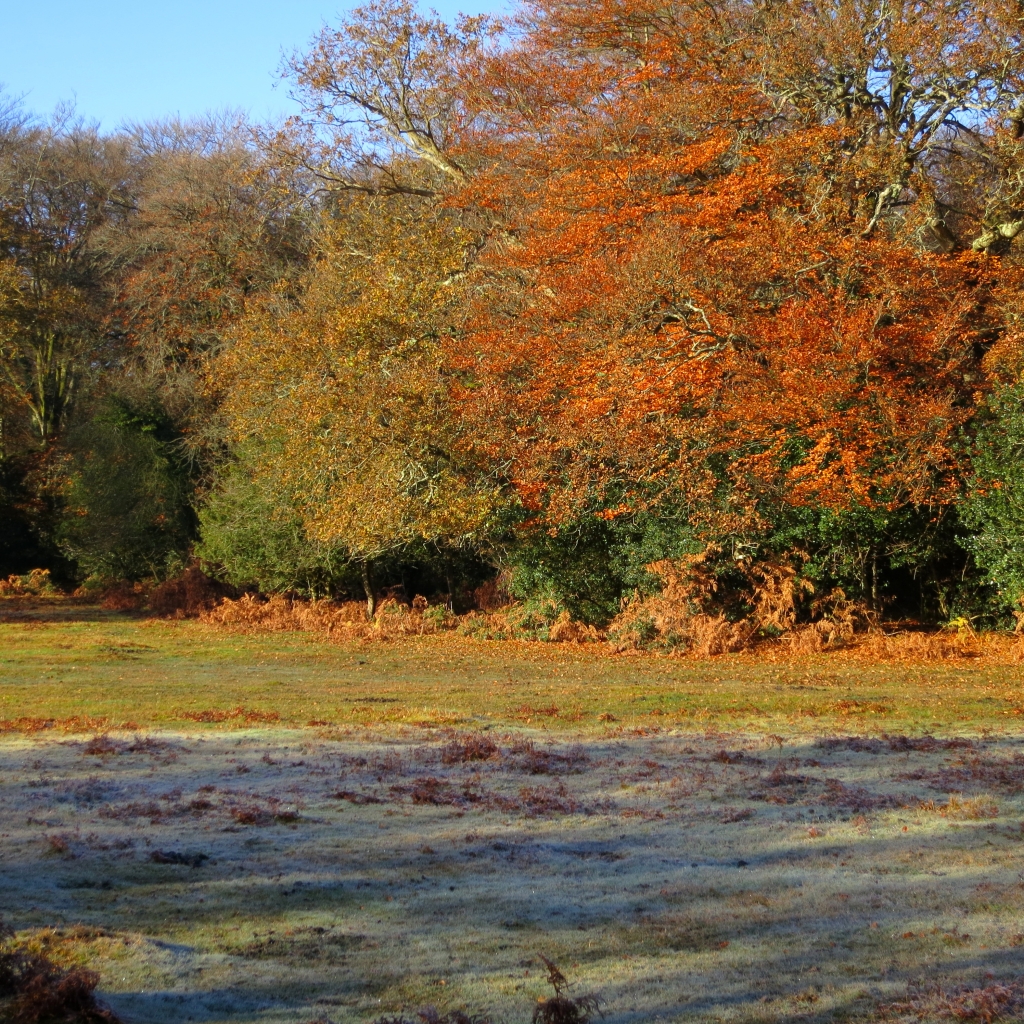 As I set off in the pouring rain for a perambulation around Minstead, I stopped to put a bin bag in our recently emptied dustbin. The bin was not empty. It was occupied by two bedraggled mice, one making sudden attacks on the other, which looked rather cowed. They were clearly in danger of starvation, and one perhaps of cannibalism. Had there not been shelter over the bins, which had their lids strewn about haphazardly, they may have drowned before they starved to death.
As I set off in the pouring rain for a perambulation around Minstead, I stopped to put a bin bag in our recently emptied dustbin. The bin was not empty. It was occupied by two bedraggled mice, one making sudden attacks on the other, which looked rather cowed. They were clearly in danger of starvation, and one perhaps of cannibalism. Had there not been shelter over the bins, which had their lids strewn about haphazardly, they may have drowned before they starved to death.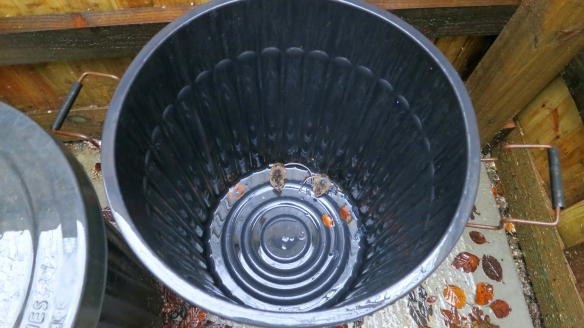 As a reward for their posing for me, I gently placed the bin on its side and, in turn, they scampered off.
As a reward for their posing for me, I gently placed the bin on its side and, in turn, they scampered off.
I chose the Upper Drive route which has more forest before you reach the road. The recent pools are now becoming lakes, and the rivulets down the road steady streams. A silent, statuesque, pony, head drooping, planted across Seamans Lane, stood looking damp and forlorn. I turned off right in the direction of Emery Down. Reaching the ford, I now knew what it was all about. A torrent poured down the hill leading to Furzey Gardens. Drivers spurting and spraying their cars across the stream would certainly need to test their brakes when they reached comparatively dry ground; and I would have made my trouser legs even more soggy than they already were had I not used the footbridge.
Reaching the ford, I now knew what it was all about. A torrent poured down the hill leading to Furzey Gardens. Drivers spurting and spraying their cars across the stream would certainly need to test their brakes when they reached comparatively dry ground; and I would have made my trouser legs even more soggy than they already were had I not used the footbridge.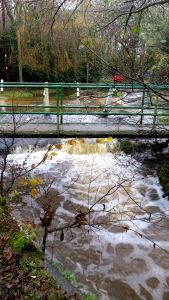 I walked up the hill, turning right at a T junction leading to Minstead Hall, whence I returned by the lower drive to Castle Malwood Lodge. Climbing up this steep road I took care to keep to the central camber where all I had to negotiate was debris from the storms, as opposed to the water flowing down the sides.
I walked up the hill, turning right at a T junction leading to Minstead Hall, whence I returned by the lower drive to Castle Malwood Lodge. Climbing up this steep road I took care to keep to the central camber where all I had to negotiate was debris from the storms, as opposed to the water flowing down the sides.
This afternoon Jackie decided to clean under the grills in the bay window. 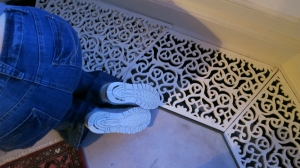 We had discovered that these concealed under-floor heating, and the smell of burning dust was a bit strong.
We had discovered that these concealed under-floor heating, and the smell of burning dust was a bit strong.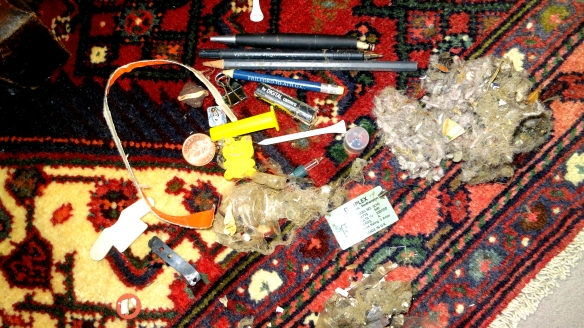 The ornate cast iron grills are rather heavy. Rather like the sides of a sofa or an armchair, these spaces, when explored, yielded trophies. Hoping for a krugerrand the best Jackie could manage was a 2p piece.
The ornate cast iron grills are rather heavy. Rather like the sides of a sofa or an armchair, these spaces, when explored, yielded trophies. Hoping for a krugerrand the best Jackie could manage was a 2p piece.
Jackie produced a delicious sausage and bacon casserole (recipe) for our evening meal. This was followed by an excellent Victoria sponge cake from the village shop. I drank Unico Brindizi Riserva 2007. Jackie didn’t imbibe because she was driving us to The Amberwood pub quiz in Walkford.
I will report on that tomorrow.
